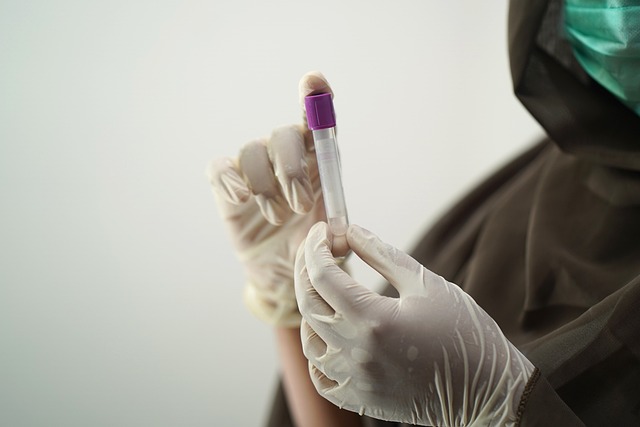The UK Standard Liver Blood Test is a home-based tool that allows individuals to monitor liver function by measuring GGT, ALT, AST, and total bilirubin levels. Elevated GGT may indicate liver or bile duct problems, while high ALT can point to liver damage or conditions like hepatitis, fatty liver disease, or cirrhosis. AST, found in the liver, heart, and muscles, provides a broader context on liver health compared to ALT. Home testing kits involve a simple finger-prick blood sample that is sent to a lab for analysis, with results interpreted against standard reference ranges. This test helps identify potential liver issues and enables early intervention, contributing to better health outcomes. The rise of this home blood testing method in the UK has made liver health monitoring more accessible and convenient, empowering individuals to take charge of their health, reduce pressure on healthcare services, and facilitate timely medical interventions when necessary. It's important to follow instructions accurately for safe and reliable results and to consult a healthcare professional for any abnormal findings.
Embarking on a journey to monitor your liver health has never been more accessible or straightforward, thanks to the advancements in at-home healthcare. This article demystifies the UK Standard Liver Blood Test, an essential tool for early detection of liver issues. We’ll guide you through understanding its significance, the convenience it offers for regular monitoring from home, and the step-by-step process to ensure you obtain accurate results safely and efficiently. Whether you seek peace of mind or proactive health management, the UK Standard Liver Blood Test is your window into your liver’s wellbeing.
- Understanding the UK Standard Liver Blood Test: A Comprehensive Guide for Individuals
- The Convenience and Importance of Home Blood Testing for Liver Health Monitoring in the UK
- Step-by-Step: How to Safely Conduct a UK Standard Liver Blood Test at Home with Accurate Results
Understanding the UK Standard Liver Blood Test: A Comprehensive Guide for Individuals

The UK Standard Liver Blood Test is a critical diagnostic tool for assessing liver health from the comfort of one’s home. This test measures three key components: GGT (Gamma-Glutamyl Transferase), ALT (Alanine Aminotransferase), and AST (Aspartate Aminotransferase). GGT is an enzyme often elevated in cases of liver or bile duct disease. ALT, found predominantly in the liver, can indicate liver damage or disease; abnormal levels can point to hepatitis, fatty liver disease, or cirrhosis. AST is similar to ALT but is also found in other tissues, including heart and muscle, making it a broader indicator of liver health when compared with ALT.
For individuals interested in the UK Standard Liver Blood Test, understanding how to interpret results is paramount. Home testing kits now allow for the collection of blood samples via finger-prick, which can then be sent to a laboratory for analysis. The test results will provide values for each enzyme, with reference ranges that help determine whether levels are within normal limits or suggest potential liver issues. It’s advisable to follow the instructions provided by the testing kit carefully and to consult with healthcare professionals when interpreting results, especially if they fall outside of the normal range. This proactive approach to health can aid in early detection and management of liver conditions, potentially leading to better outcomes and peace of mind for individuals monitoring their liver health at home.
The Convenience and Importance of Home Blood Testing for Liver Health Monitoring in the UK

In the UK, individuals have increasingly turned to home blood testing as a means to monitor their health, with liver health being a significant aspect of this trend. The UK Standard Liver Blood Test, which measures levels of substances like gamma-glutamyl transferase (GGT), alanine aminotransferase (ALT), aspartate aminotransferase (AST), and total bilirubin, provides a non-invasive way for individuals to gauge their liver function from the comfort of their home. This self-administered test offers unparalleled convenience, allowing patients to regularly check their liver health without the need for hospital visits or waiting for appointments. It empowers individuals to take an active role in managing their well-being, catch potential issues early, and make informed decisions about their healthcare. Moreover, the integration of home blood testing into routine health monitoring can lead to earlier detection of liver conditions, which is crucial given that many liver diseases are asymptomatic in their initial stages. This proactive approach facilitates timely medical interventions and supports effective disease management, underscoring its importance in the UK’s healthcare landscape.
The adoption of home blood testing for liver health monitoring has been facilitated by advancements in technology and the availability of reliable kits that provide accurate results comparable to those obtained in clinical settings. The UK Standard Liver Blood Test is a testament to the progress made in making medical diagnostics more accessible. With its ease of use and minimal invasiveness, it allows for frequent health checks without disrupting daily life. This accessibility is particularly valuable for individuals with busy schedules or those living in remote areas where medical facilities are limited. By leveraging home blood testing, the UK healthcare system can promote preventative healthcare and foster a more informed population, ultimately contributing to better health outcomes and reducing the burden on healthcare services.
Step-by-Step: How to Safely Conduct a UK Standard Liver Blood Test at Home with Accurate Results

When conducting a UK Standard Liver Blood Test from the comfort of your home, precision and safety are paramount. The process begins with obtaining a finger-prick blood sample kit, which is typically available for purchase online or through a healthcare provider. Ensure that you follow the manufacturer’s instructions precisely to avoid contamination and ensure accurate results. Begin by cleaning the fingertip with an alcohol swab provided in the kit, selecting a fingertip that has been neither bruised nor calloused for optimal blood flow.
Once the area is clean and dry, pierce the lancet provided against the side of the selected fingertip to create a small, painless puncture. Gently squeeze the finger to produce a drop of blood within seconds. Immediately apply a drop of blood onto the test strip included in your kit, ensuring that the blood fills the designated areas on the strip as indicated by the manufacturer’s guidelines. After applying the blood, place the test strip into the accompanying analyser device, which will measure the levels of liver enzymes and other markers associated with liver health. The device will automatically calculate and display your results after a short waiting period. It is crucial to follow the instructions exactly as described; inconsistencies can lead to inaccurate readings.
After obtaining the result, compare it with the reference ranges provided by the UK Standard Liver Blood Test guidelines. These ranges are based on the values that reflect normal liver function. If your results fall outside these ranges, or if you have concerns about your liver health, consult with a healthcare professional for further evaluation and guidance. It is important to handle and interpret the test results responsibly, as they can provide valuable insights into your liver’s condition and inform potential lifestyle or medical interventions.
UK residents now have the advantage of monitoring their liver health from the comfort of their own homes, thanks to the UK Standard Liver Blood Test. This article has delved into the significance of this test and provided a clear, step-by-step guide for conducting it accurately at home. The convenience and reliability of home testing are making regular health checks more accessible than ever, empowering individuals with valuable insights into their well-being. By understanding the components of the UK Standard Liver Blood Test and knowing how to perform it, one can take proactive steps towards maintaining liver health or seeking timely medical advice when necessary. This initiative underscores the UK’s commitment to health innovation and personalised healthcare.
